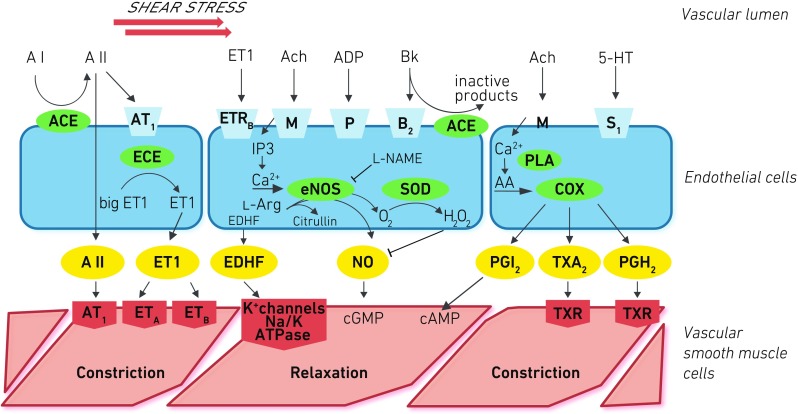Fig. 1.

The endothelium actively sends relaxing/dilating and constrictive signals to the smooth muscle cells. Three central pathways are outlined: The constituent endothelial nitric oxide synthase (eNOS, NOS III) is regulated by endocrine and paracrine effects such as endothelin-1 (ETR, ET-1) and acetylcholine (ACh) as well as shear stress via pertussis toxin-sensitive Gq/i pathways, calcium, and calmodulin. Nitric oxide (NO) signals relaxation, but uncoupling can lead to increased oxidative stress (H 2 O 2). The endothelial cells also evoke hyperpolarization of the cell membrane of smooth muscle cells (endothelium-dependent hyperpolarization factor (EDHF)). Cyclooxygenase 1 (COX) produces eicosanoids that have in the case of prostacyclin (PGI 2) relaxing effects through cyclic AMP or constrictive effects particularly for thromboxane A2 (TXA 2). Angiotensin II (A II) has direct (by angiotensin receptor 1 (AT1)) or indirect constrictive effects through ET-1
